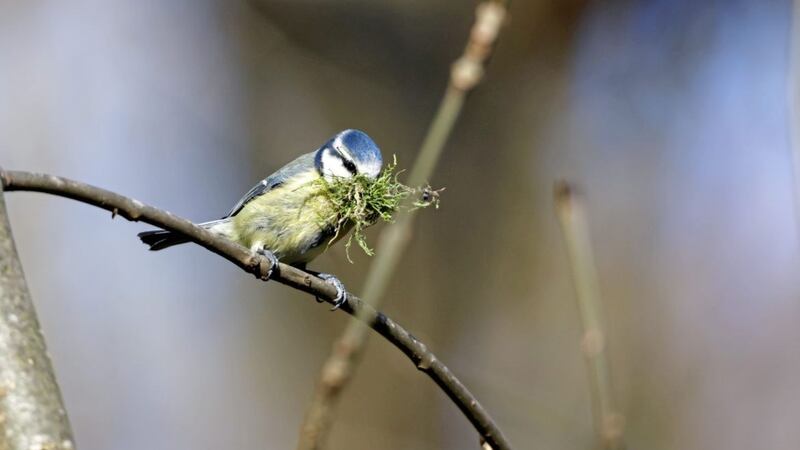'In every walk if I but peep I find
Nests newly made or finished all and lined...
And beautiful it is to walk beside
The lanes and hedges where their homes abide'
JOHN Clare's words from his poem Birds' Nests hint at the joy and intrigue we experience as birds busy themselves with the task of nest building.
Beaks filled with twigs, moss and finer linings have been a common sight recently as birds race against time to rear their young in safe secluded hideaways. So many years after seeing my first nest, that of a blackbird, I still marvel at the genius of a freshly made nest.
In early April I observed a pair of blue tits claiming a newly erected nest box as their home for the season. These birds are easily enticed into using nest boxes, given their traditional nest sites were holes and cavities in woodland trees.
Well known for taking to holes in walls, pipes, and letter boxes, I watched a pair successfully raise a clutch last year in a wall mounted cigarette bin, outside our local church.
As the female began carrying moss to start building in this new box, I was taken by her resourcefulness in also pulling shreds of soft lining from the carpet strip, made as a roof hinge for the box, before taking them inside.
The nest will by now have been finished off with soft downy feathers and fine hairs. Because blue tits have only one clutch, they need to synchronise the hatching of chicks with leaf burst and emergent caterpillars, usually in May.
Nest construction can therefore stretch to over a week before the eight or 10 eggs are laid through April, a process I've observed over many years at another location through live streaming from a nest-cam box.
The female builds the structure with moss and leaves, steadily building up a cushioned platform, ahead of her forming a cup in the centre through turning and threshing before finally lining it with soft downy feathers and animal hairs.
Years ago in school, attempting to understand the intricacies of nest building, my pupils and I endeavoured to construct some birds' nests having examined windfall nests from previous years.
Grasses, hair, furs, twigs, and various man-made items were used and despite some spirited efforts, all the formations lacked the essential core strength of the real thing, a lesson on the incredible engineering ability of wild birds.
Although nests vary in shape and size, the constituent parts are woven securely, well anchored and camouflaged to provide safe harbour for eggs and young. Exceptions include cliff nesting birds like razorbills and guillemots which, rather than building substantial nests, rely more on the shelter of rocks, isolation from land-based predators and their specially pointed eggs, so shaped to prevent them from rolling off the cliff edge.
Kingfishers rear their young in a chamber at the end of a tunnel burrowed into a riverbank, while sand martins also use the safety of burrows in sandy cliff banks.
Whether it's the elaborate mossy creation of the wren, domed and complete with side entrance, or the huge osprey structure built high upon a treetop, with large branches, twigs, and bark, sometimes stretching two metres across, nests combine precise construction with aesthetic furnishing, a merger of science and art.
Walking through the church grounds before finishing this piece, I came upon two thrush eggs beneath a conifer, one smashed the other intact. The likely consequence of a magpie raid, they were a timely reminder of the many dangers involved in nest making and chick rearing.








